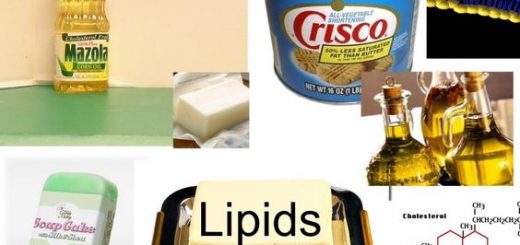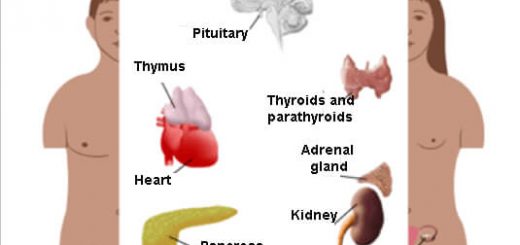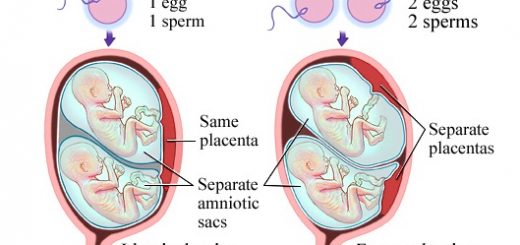Immune response, Mechanisms of Acquired (Specific or adaptive) immunity and Memory cells
Acquired immunity is the resistance of the body to new pathogens or that have infected the body before, If the second line of defence failed in getting rid of the foreign body, the body will use the acquired immunity ( third line of defence ), The third line of defence is represented by lymphocytes that respond to pathogens by a series of specific defence mechanisms that resist the pathogen, and these defence mechanisms are called the immune response.
Mechanisms of Acquired Immunity
The immune response is a series of specific defence mechanisms that done by the lymphocytes to resist the pathogen, The acquired immunity is done through two separated mechanisms that are interconnected with each other, which are:
- Humoral or antibody-mediated immunity.
- Cellular or cell-mediated immunity.
Humoral or antibody-mediated immunity
Humoral immunity is the immune response through which the B-lymphocytes defend the body against antigens of pathogens (like bacteria and viruses) and toxins that are present in the body fluids (blood plasma and lymph) by producing antibodies.
Steps of humoral immunity
Attachment of B-lymphocytes with antigens:
- When a pathogen enters the body carrying on its surface a specific antigen, the B-lymphocyte recognizes this antigen and attaches to it by using the immune receptors that are present on its surface.
- The antigen binds with a protein in the B-lymphocytes that called “Major Histocompatibility Complex (MHC)”.
- Then, the complex resulting from the binding between the antigen and MHC protein transfers to the surface of B-lymphocytes, B-lymphocytes are very specific, as each of them can respond to a single specific antigen.
Role of macrophages:
- At the same time, the macrophages engulf the antigen and digest it by their lysosomal enzymes into fragments.
- These fragments bind inside the macrophages to MHC protein.
- Then, the complex resulting from the binding between the antigen and MHC protein transfers to the plasma membrane of macrophages ( to be presented on its outer surface).
Activation of the helper T-lymphocytes:
- Helper T-lymphocytes (TH) will recognize the antigen by the MHC protein that presents on the surface of macrophages.
- The helper T-lymphocytes (TH) bind to the antigen-MHC complex through their receptor CD4 that presents on their surface to be converted into activated helper T-lymphocytes (TH).
- The activated helper T-lymphocytes (TH) release interleukins that will activate the B-cells carrying on their surface the antigens bound to the MHC protein.
- The helper T-cells (TH) can recognize the antigen only after being treated by the macrophages and presenting it on their outer surface bound to the MHC protein.
Production of antibodies:
The activated B-cells will divide, multiply and differentiate into :
- Plasma B-cells: produce large amounts of antibodies which pass through the lymphatic vessels and blood circulation to fight the infection.
- Memory B-cells: remain in the blood for a long period ( 20: 30 years ) to recognize the same antigen, if it re-entered the body, where they divide and differentiate into plasma cells that secrete antibodies specific for the same antigen, making a rapid response ( faster than the first response to the first infection ).
Destruction of pathogens ( microbes ):
- The antibodies produced by the plasma cells will reach the blood circulation through the lymph, where they bind to the antigens found on the surface of the invading pathogens, this will activate the macrophages to re-engulf these antigens and this process continues for days or weeks.
- The antibodies produced by the plasma cells are not effective enough to destroy the foreign cells, such as the infected cells by viruses because these antibodies are relatively large-sized molecules that can’t reach the virus inside the cell, In this case, the foreign cells will be combated by the T-lymphocytes.
Cellular or cell-mediated immunity
Cellular immunity is the immune response that is done by T-lymphocytes through the receptors found on their membranes which give them a specific response to the antigens.
Specific response to antigens: Each T-cell produces during its maturation a specific type of receptors which is specialized to its membrane, Therefore, each type of these receptors can bind to a single type of antigens.
Steps of cellular immunity
The role of macrophages:
- When the pathogen (bacteria or virus) enters the body, the macrophages will engulf it and decompose it into small fragments.
- These small fragments bind inside the macrophages to MHC protein.
- The antigen-MHC complex will transfer to the plasma membrane of macrophages to be presented on their outer surface.
Activation of helper T-lymphocytes:
The helper T-lymphocytes (TH) will bind through their receptor CD4 on their membrane to the antigen-MHC complex presented on the surface of macrophages to be converted into the activated helper T-lymphocytes.
The activated helper T-lymphocytes do the following:
- Releasing of interleukins that activate the TH cells bound to the antigens to divide and from a strain of Activated TH cell&s, Memory TH cells that remain in the blood for a long time to recognize the previous antigens if it re-entered the body again.
- Secreting different types of the cytokines proteins that attract the macrophages to the site of infection in large amounts, They stimulate the macrophages, other types of T-lymphocytes ( cytotoxic T-cells (TH) ) and B-lymphocytes, therefore activating both cellular and humoral immunity, They activate the natural killer cells (NK) to attack the abnormal body cells like the carcinogenic cells or cells that infected by pathogens.
The role of the cytotoxic T-cells (TC):
The cytotoxic T-cells can recognize foreign bodies by the help of the receptor CD8 found on their surfaces, whether these foreign bodies are transplanted tissues or the antigens of microbes that enter the body or carcinogenic cells and destroy them, when these cells bind to the antigen, they create pores in the membrane of the foreign body by secreting:
- A specific protein is called perforin ( perforating protein ), as this protein perforates the membrane of the foreign body.
- The lymphatic toxins that activate certain genes in the nucleus of the infected cell, leading to the destruction of the nucleus and its death.
Inhibition of the immune response
After destroying the antigens, the suppressor T-cells (TS) bind by the help of the receptor CD8 found on their surfaces to the plasma B-cells, helper T-cells and cytotoxic T-cells to secrete proteins called “lymphokines” which suppress or inhibit the immune response.
This leads to the stopping of the antibodies from the plasma B-cells , The death of many activated helper T-cells and cytotoxic T-cells, Storage of some lymphocytes (plasma B-cells, helper T-cells and cytotoxic T-cells) in the lymphoid organs to be ready to combat any similar infection when needed.
Stages of acquired immunity
Acquired immunity passes through two stages, which are:
- First stage: Primary immune response.
- Second stage: Secondary immune response.
Primary immune response
It is an immune response to a new pathogen, B and T-cells are responsible for the primary immune response, where they respond to the antigens of this pathogen and attack them until they are destroyed, It is a slow response as it takes between five to ten days to reach its maximum productivity of B and T-cells that need time to multiply.
It is accompanied by the appearance of disease symptoms because the infection becomes widespread in the body, Both types of memory cells ( T & B ) are produced, but remain inactive.
Secondary immune response
It is an immune response to the same pathogen that has been infected the body before, Memory cells are responsible for the secondary immune response because they store information about the antigens that had been fought by the immune system in the past.
It is a very fast response, as the pathogen is often destroyed before the appearance of the symptoms, It is not accompanied by the appearance of disease symptoms because the pathogen is destroyed quickly, It activates the memory cells that are formed previously in the primary immune response.
Memory cells
Type of cells that store information about the antigens that had been fought by the immune system in the past, Human body contains two types of memory cells, which are Memory B-cells and Memory T-cells.
Characteristics:
- Memory cells are produced during the primary immune response.
- Memory cells can live for tens of years and may survive along the person’s lifetime, while B and T-cells can survive only for a few days.
- During the second infection with the same pathogen, the memory cells respond to the pathogen once it enters the body, where they start dividing quickly to produce large amounts of antibodies and activated T-cells within a short period of time.
Example: Human is infected with measles once during his lifetime because he gains acquired immunity against this disease.
Immune system structure, function, cells & Types of body defense mechanisms
Human immune system, Functions & Structure of the lymphatic system in human
Natural (Non-specific or innate) immunity, How does human body protect itself from pathogens?
Genes, Chromosomes, Proteins, Bacteriophages & Quantity of DNA in the cells



